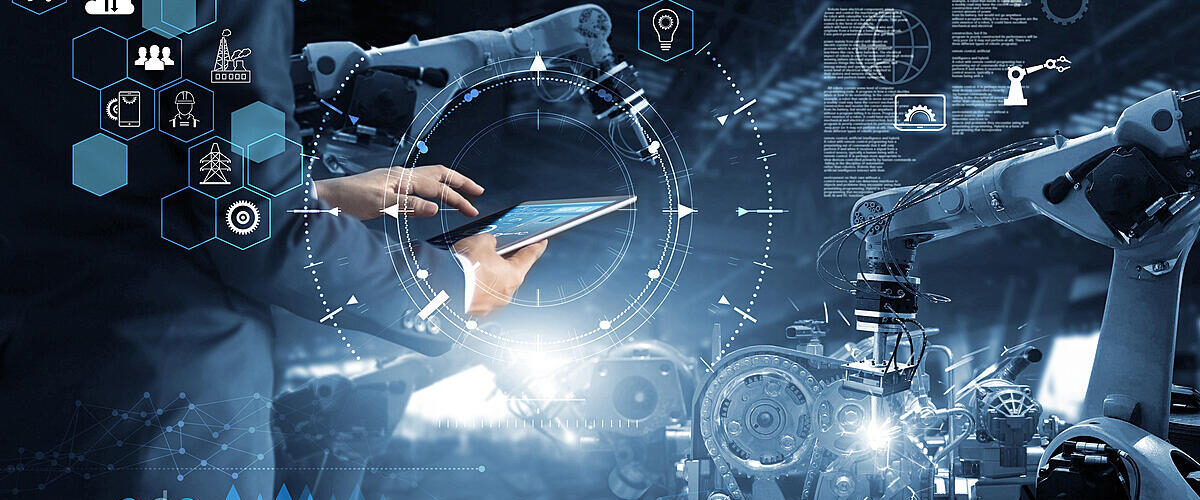
Generative Artificial Intelligence (AI) models have emerged as powerful tools for creating realistic and coherent content, ranging from images and music to text and videos. Beyond the realm of creative applications, the integration of generative AI with robotics and automation presents a promising avenue for revolutionizing various industries and advancing the capabilities of autonomous systems. By harnessing the generative power of AI, robots and automated systems can go beyond rule-based programming and adaptively generate solutions, enabling them to tackle complex tasks, learn from experience, and interact with the environment more intelligently.
This article aims to delve into the role of generative AI in robotics and automation, exploring its potential applications, benefits, and challenges. By understanding the intersection of these two fields, we can uncover how generative AI can enhance robotic systems and drive innovation in automation.
Role of Generative AI in Robotics and Automation
Generative Artificial Intelligence (AI) plays a pivotal role in shaping the future of robotics and automation. By harnessing the power of generative models, robots and automated systems can achieve enhanced capabilities, adaptability, and efficiency. The role of generative AI in robotics and automation can be observed through several key aspects:
- Task Generation and Optimization: Generative AI models enable robots to generate and optimize task plans. By learning from a combination of training data and real-time sensor input, robots can adaptively generate efficient action plans to accomplish complex tasks. Generative AI helps in identifying optimal trajectories, grasping strategies, or movement sequences, allowing robots to perform tasks with improved speed, precision, and resource utilization.
- Intelligent Decision-Making: Integrating generative AI with robotic systems empowers them with autonomous decision-making capabilities. Generative models enable robots to learn from vast amounts of data, including sensor readings and historical experiences, to generate probabilistic predictions. This allows them to make informed decisions in dynamic and uncertain environments, enhancing their ability to navigate obstacles, avoid collisions, or respond to changing conditions.
- Human-Robot Collaboration: Generative AI enhances human-robot collaboration by enabling robots to understand and generate human-like responses. This capability facilitates seamless interaction and communication between humans and robots. Generative models can generate natural language, gestures, and expressions, making robots more intuitive and user-friendly. This opens up opportunities for robots to assist humans in various domains, such as healthcare, manufacturing, and customer service.
- Learning and Adaptation: Generative AI facilitates learning and adaptation in robotics and automation. Robots can leverage generative models to learn from experience, generate new knowledge, and improve their performance over time. By generating synthetic data, robots can augment their training datasets, allowing them to handle diverse and previously unseen situations. This iterative learning process empowers robots to adapt to new environments, tasks, or challenges more effectively.
- Simulation and Planning: Generative AI plays a crucial role in creating virtual simulations for robotics and automation. These simulations enable robots to undergo training, testing, and optimization in a controlled and cost-effective virtual environment. By generating realistic simulated scenarios, generative AI enhances the planning and development of robotic systems, reducing the need for extensive physical experimentation and enabling faster deployment.
- Creative and Adaptive Applications: Generative AI allows robots to exhibit creativity and adaptability in their tasks. By leveraging generative models, robots can generate novel solutions, designs, or responses based on learned patterns and preferences. This ability to generate diverse outputs enhances the flexibility and innovation potential of robotic systems, enabling them to address complex challenges and adapt to changing requirements.
While the integration of generative AI in robotics and automation brings numerous benefits, it also poses challenges. Ensuring the safety, reliability, and ethical use of generative AI-based systems is crucial. Addressing interpretability, explainability, and bias concerns are ongoing research areas to ensure responsible and accountable deployment of generative AI in robotics and automation.
In summary, generative AI empowers robotics and automation by enabling task generation and optimization, intelligent decision-making, human-robot collaboration, learning and adaptation, simulation and planning, and fostering creativity and adaptability. By leveraging the capabilities of generative AI, robots and automated systems can unlock new levels of efficiency, autonomy, and innovation, contributing to advancements in various industries and domains.
Conclusion
In conclusion, the integration of generative AI models with robotics and automation holds immense potential for transforming various industries. Generative AI enables robots and automated systems to generate optimized task plans, make intelligent decisions, collaborate effectively with humans, learn and adapt to new situations, simulate and plan in virtual environments, and exhibit creativity and adaptability.
By harnessing the power of generative AI, robots can achieve enhanced capabilities, adapt to dynamic and uncertain environments, and perform complex tasks with improved efficiency and precision. The ability to generate diverse outputs and learn from experience empowers robots to address challenges, optimize resource utilization, and continuously improve their performance.
Furthermore, generative AI facilitates human-robot collaboration by enabling robots to understand and generate human-like responses, enhancing communication and interaction. It also enables cost-effective virtual simulations, reducing the need for extensive physical experimentation and accelerating the development and deployment of robotic systems.
However, challenges such as ensuring safety, reliability, interpretability, and ethical considerations in the use of generative AI-based systems must be addressed. Ongoing research and development efforts focus on addressing these challenges and promoting responsible and accountable deployment of generative AI in robotics and automation.
Overall, exploring the role of generative AI in robotics and automation opens up a world of possibilities, revolutionizing industries, enhancing efficiency, and driving innovation. As technology advances and researchers continue to push the boundaries, the integration of generative AI models with robotic systems will play a crucial role in shaping the future of automation, paving the way for intelligent, adaptive, and versatile robotic systems in diverse domains.

Post a Comment